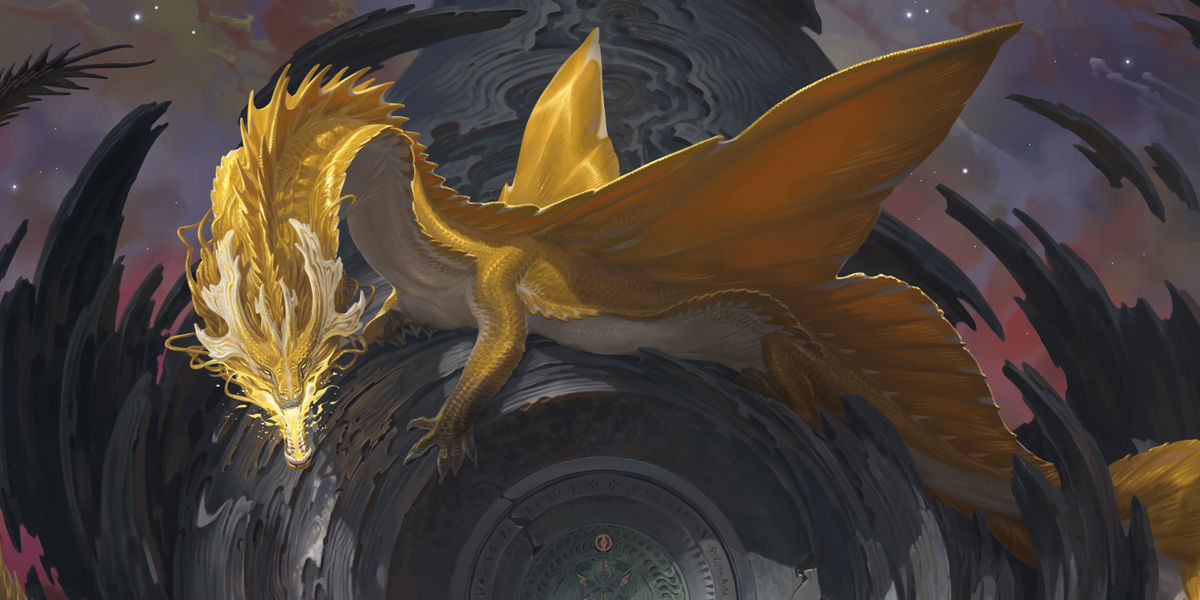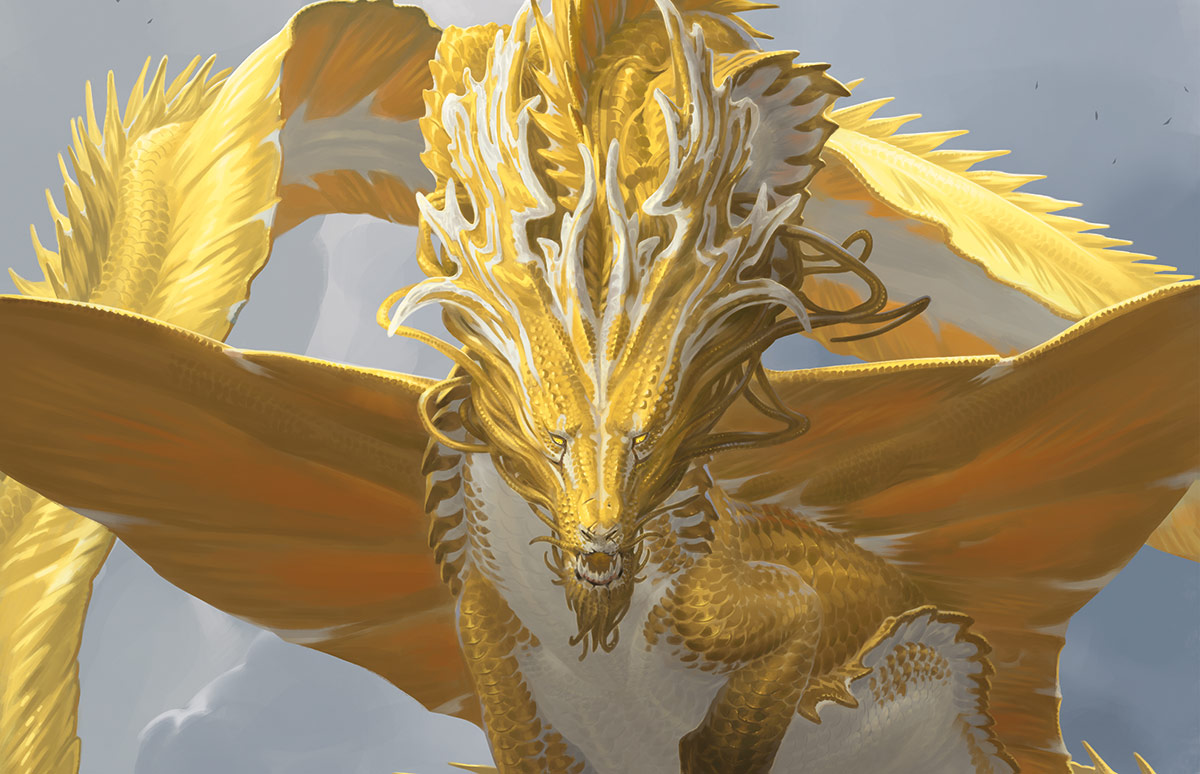The new Monster Manual boasts over 500 monsters, combining revamped classics with a host of brand-new foes to bring excitement to your games. In this trove of ferocious foes, each creature has been fine-tuned to balance them for the updates in the new Player’s Handbook and Dungeon Master’s Guide and features a streamlined stat block designed to make them easier to run.
In this article, we’ll break down the changes in these new monster entries, highlighting how they save you time and effort at the table while making combat smoother and more intuitive!
- New Layout Highlights Crucial Information
- More Information About Monster’s Habitat and Treasure
- Monsters Are Easier to Run
- Exciting Updates for Legendary Creatures
Claim Your Free Copy of Hold Back the Dead
Hold Back the Dead is a single-session adventure part of D&D's yearlong 50th-anniversary celebration. In this adventure designed for four to six level 4 characters, players are tasked to defend Ironspine Keep against the looming horde of the sinister lich, Szass Tam.
Dive straight into the action with stat blocks from the new Monster Manual, a full map of the fortress defense zones, details on siege weapons, and pre-generated character sheets!
New Layout Highlights Crucial Information
The new Monster Manual contains a trove of new and revamped tools to fuel your imagination and streamline your encounters:

Initiative
Initiative is now explicitly listed at the beginning of a creature’s stat block. This includes the monster's Initiative modifier and its Initiative score, so DMs can either roll for Initiative using the monster’s Initiative modifier or use their static Initiative score when deciding the order creatures will go in Initiative.
Ability Scores and Saving Throws
You’ll find the section for ability scores and ability modifiers is no longer a list of scores with modifiers in brackets. It’s now a table that lists the ability score, ability modifier, and corresponding saving throw bonus, including Proficiency Bonus where applicable, in a simple and easy-to-read format. This makes some of the most crucial information about a monster more clearly visible when glancing at the stat block.
Immunities
The next change you’ll notice is that Immunity to damage types and conditions are grouped under a single “Immunity” list. If a monster has Immunity to both damage types and conditions, Immunities to damage types are listed first and Immunities to conditions are listed second. A semicolon separates the two lists to avoid confusion.
Gear
Gear is a new feature in some creatures’ stat blocks that highlights notable, non-treasure items they carry. This can include anything from weapons and armor to items like a Spellbook or Wand.
If a creature has equipment that can be given away or retrieved, those items are listed in the Gear entry. However, not all of a creature’s equipment is necessarily included. For instance, clothing appropriate for the creature is assumed but isn’t listed. Similarly, unusual or monster-specific equipment that isn’t detailed in the 2024 Player’s Handbook is left to the DM’s discretion.
More Information About Monster’s Habitat and Treasure
At the very start of certain monsters’ entries in the new Monster Manual, you’ll see two new pieces of information: Habitat and Treasure.
This helps you see at a glance, a monster’s native environment and what rewards may await characters that defeat–or assist, depending on their disposition–the monster.
The habitat information corresponds to the Monsters by Habitat lists found in the appendices of the new Monster Manual, while the listed treasure types correspond to the Treasure Themes found in chapter 7 of the 2024 Dungeon Master’s Guide. With this information, you’ve got everything you need to decide where in your world your party might encounter the monster, brainstorm additional suitable monsters for your encounter, and develop what types of treasure to include.
Monsters Are Easier to Run

Running combat is hard enough without combing monster stat blocks for pertinent information. The design philosophy behind the new stat blocks in the new Monster Manual was to make the information you need to run encounters easy to find while in the heat of battle.
Consolidated Actions
The Monster Manual simplifies monsters’ abilities by grouping related actions. This change reduces clutter and keeps the action flowing smoothly while still making monsters varied and exciting in combat.
For example, the 2025 version of the Ancient Gold Dragon now has a single Rend attack that consolidates their attacks in a concise package with less repeated information. This means there’s less text to parse as you’re using a stat block, making running the monster more streamlined.
Clearer Language
The new Monster Manual follows the new Player’s Handbook and Dungeon Master’s Guide in improving the game’s language to make playing easier. For monsters, this covers a lot of small changes that add up to make things more accessible. Here is how the consolidated wording makes this monster easier to run at a glance:
Fire Breath (Recharge 5-6). Dexterity Saving Throw: DC 24, each creature in a 90-foot Cone. Failure: 71 (13d10) Fire damage. Success: Half damage
This new wording is more concise and places the key information upfront. You’re immediately told that a saving throw is required and how it targets creatures. The effects of the ability are split into Failure and Success sections, clearly laying out how the action works.
Bonus Action and Reaction Spells
Spellcasting monsters now cast spells in ways that are easier to utilize in combat. A monster's spells might appear as options in the Spellcasting action, or they might be specially highlighted as Reactions or Bonus Actions, helping you spot when to use these spells. Some monsters might even cast spells at specific levels or faster than normal.
Each spell-related action, Bonus Action, or Reaction highlights how to use spells in the ways most appropriate for its caster.
Exciting Updates for Legendary Creatures

Higher CR creatures often have more complex stat blocks due to their propensity for more powerful and varied abilities. The new Monster Manual has streamlined these stat blocks, so even if you’re running a cataclysmic final battle, you’ll still be able to focus on the fun.
Lair Bonuses
For more powerful monsters, such as the Ancient Gold Dragon showcased in this article, there is a chance your players will encounter them in their lair, where such monsters are at their strongest. To reflect this, monsters gain bonuses to certain features while within their lair. For the ancient gold dragon, this manifests as additional Legendary Resistances and Legendary Actions.
Updated Legendary Actions
Speaking of Legendary Actions, those have also seen some exciting changes.
Many monsters’ Legendary Actions are now more varied, featuring more options allowing them to reposition or cast spells in the midst of combat. Overall, this makes Legendary Actions more versatile and gives these powerful monsters more flexibility during encounters.
Monsters with Legendary Actions have a certain number of uses of their Legendary Actions, plus an additional use when the monster is in its lair. Each Legendary Action counts as a single use of a monster's Legendary Actions—none cost multiple actions to use. Expended uses of Legendary Actions are still regained at the start of each of a monster's turns, encouraging you to use these actions frequently—and potentially to devastating effect.
This reduces bookkeeping on the DM's part and also allows these monsters to show off more of their abilities over the course of an encounter.
Lair XP
If the prospect of epic loot wasn’t enough, the 2024 Monster Manual offers an incentive to player characters willing to face ferocious foes in the seat of their power. Taking on monsters in their lair now offers an increased XP reward that represents the additional difficulty that comes from facing a monster with access to more Legendary Resistances and more Legendary Actions.
For example, defeating an Ancient Gold Dragon provides 62,000 XP, but defeating the dragon in its lair offers 75,000 XP. Do you think your players are ready to rise to the challenge?
Get Your Hands on These New Stat Blocks
This rounds out our overview of the changes you’ll be seeing in the stat blocks found in the new Monster Manual. With a slew of quality-of-life improvements, running fun and challenging encounters for your players will be even easier. Grab your copy of the new Monster Manual and start preparing for epic encounters!

Davyd is a Dungeon Master living in the south of England with his wife Steph, daughter Willow, and two cats Khatleesi and Mollie. In addition to D&D, he loves writing, 3d printing, and experimenting home automation, often combining all four with varying degrees of success.








-
View User Profile
-
Send Message
Posted Jan 31, 2025I think it's like the average damage and rolled damage numbers. Use +16 if you want to roll its Init, or just use the (26) if you don't feel like rolling.
-
View User Profile
-
Send Message
Posted Jan 31, 2025So wait, it still isn't clear what the monster can do as an action. The text states it can do 3 rend attacks or 1 specific spell. What about the other spells - can you substitute them? And you can do a weakening breath, but what about the fire breath in the example? They need to make it clearer that you can do either X Y or Z, or XX and Z, etc. Somethings look better and are clarified, but it still leaves questions.
-
View User Profile
-
Send Message
Posted Feb 5, 2025They "fixed" the missing spell attack bonus from the statblock! (at leas in Beyond)
-
View User Profile
-
Send Message
Posted Feb 7, 2025I can only share how I interpret this, but I understand and agree with this sentiment, that some clarity would go a long way.
Monsters have the same Action Economy as Players, unless there is a clearly detailed exception, like Legendary Actions. The can Actions, Bonus Actions, and Reactions as any other creature.
In the case of the Ancient Gold Dragon, I read this as the monster can take one Action on its turn, just like a player. Those Actions are:
Other earlier complaints were about the missing Lairs and Lair Actions – which as many suspected are not part of the Stat Block, but rather part of the monster’s larger entry within the Monster Manual itself.
Overall, I appreciate the work that has gone into the new Stat Blocks. I know it will take a little getting used to, but that’s only because I’ve played so much with the previous format. Just a matter of muscle memory 😊
-
View User Profile
-
Send Message
Posted Apr 14, 2025Beyond this, banish can return to anywhere in 120 ft. This means that it can deal up to 12d10 additional bludgeoning damage to any character without fall damage reduction.